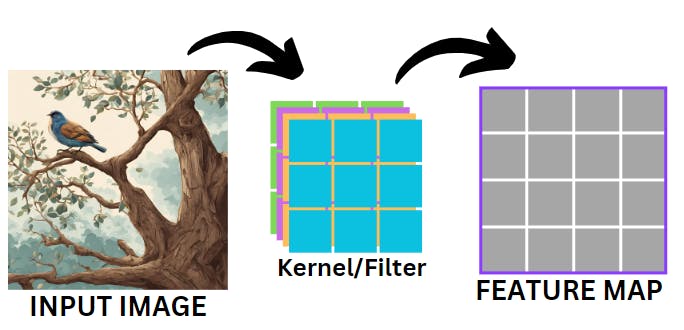Understanding the Magic of Convolutional Neural Networks: A Comprehensive Exploration
Introduction
Have you ever wondered how technologies like self-driving cars, facial recognition, and smartphone cameras actually work? The secret sauce behind many of these modern AI capabilities are Convolutional Neural Networks (CNNs) - a powerful type of machine learning model that excels at analyzing visual data.
CNNs are able to automatically learn patterns and features directly from images, videos, and other 2D data inputs. This makes them extremely valuable for a wide range of computer vision tasks like image classification, object detection, and image segmentation.
CNNs are a powerful type of artificial neural network that excel at analyzing visual data like images and videos. They are behind many modern AI breakthroughs in computer vision tasks like image recognition, object detection, and self-driving cars.
But how do CNNs actually work? Let's break it down step-by-step.
What is a Convolutional Neural Network?
At its core, a Convolutional Neural Network (CNN) is a type of deep learning algorithm specifically designed to analyze visual data. Imagine you have a collection of images and you want to teach a computer to recognize objects within them. CNNs are the go-to tool for this task.
Comprising convolutional layers, pooling layers, and fully connected layers, CNNs undergo a process where convolutional operations extract features, pooling layers downsample these features, and fully connected layers perform classification or regression tasks based on learned features.
In practical terms, consider a scenario where we aim to teach a computer to distinguish between different types of fruits from images. Unlike traditional neural networks, which would treat each pixel in isolation, CNNs leverage convolutional filters to identify essential visual patterns like edges and shapes. Through successive layers, CNNs progressively abstract these features, enabling them to recognize complex objects within images, thereby revolutionizing image analysis across diverse domains such as computer vision, medical imaging, and autonomous systems.
A CNN uses small filter grids (like 3x3 or 5x5) that slide across the input image to detect simple patterns or features like edges, curves, etc. This process creates a feature map that highlights where those patterns exist.
For example, one filter might detect horizontal edges, another might find vertical edges, and others could pick up on more complex shapes or textures.

Building Blocks of CNNs:
Convolutional Layers: Convolutional layers apply learnable filters (kernels) to input images, extracting features such as edges, textures, and patterns.
Pooling Layers: Pooling layers downsample feature maps obtained from convolutional layers, reducing spatial dimensions while preserving important information.
Activation Functions: Non-linear activation functions like ReLU introduce non-linearity into the network, enabling it to learn complex relationships between features.
Fully Connected Layers: Fully connected layers perform classification based on the high-level features extracted by earlier layers.
Example: Building a CNN for Image Classification
Imagine we have a dataset containing images of handwritten digits (0-9) from the MNIST dataset. Our goal is to create a CNN that can accurately classify these digits.
1. Data Preprocessing: Before constructing the CNN, we need to preprocess our data. This involves tasks like resizing images, normalizing pixel values, and splitting the dataset into training and testing sets.
2. Building the CNN Architecture: We'll construct a simple CNN architecture using TensorFlow and Keras. This CNN will consist of convolutional layers, pooling layers, and fully connected layers.
import tensorflow as tf
from tensorflow.keras import layers, models
# Define the CNN architecture
model = models.Sequential([
layers.Conv2D(32, (3, 3), activation='relu', input_shape=(28, 28, 1)),
layers.MaxPooling2D((2, 2)),
layers.Conv2D(64, (3, 3), activation='relu'),
layers.MaxPooling2D((2, 2)),
layers.Flatten(),
layers.Dense(64, activation='relu'),
layers.Dense(10, activation='softmax')
])
# Compile the model
model.compile(optimizer='adam',
loss='sparse_categorical_crossentropy',
metrics=['accuracy'])
# Display the model architecture
model.summary()
3. Training the CNN: Next, we'll train our CNN on the MNIST dataset. This involves feeding the training images and their corresponding labels into the model and adjusting the weights through backpropagation.
# Train the model
history = model.fit(train_images, train_labels, epochs=5, validation_data=(test_images, test_labels))
4. Evaluating the Model: Once trained, we'll evaluate the performance of our CNN on the testing dataset to assess its accuracy and generalization ability.
# Evaluate the model
test_loss, test_acc = model.evaluate(test_images, test_labels)
print(f'Test accuracy: {test_acc}')
5. Conclusion: In this example, we've built a CNN using TensorFlow and Keras to classify handwritten digits from the MNIST dataset. By leveraging convolutional layers to extract features and fully connected layers for classification, our CNN achieves impressive accuracy in identifying digits. This demonstrates the effectiveness of CNNs in image classification tasks.

Advanced Techniques in CNNs:
Transfer Learning: Leveraging pre-trained CNN models like VGG, ResNet, or MobileNet and fine-tuning them for specific tasks.
Data Augmentation: Generating augmented training samples by applying transformations like rotation, scaling, and flipping to existing data, reducing overfitting.
Regularization Techniques: Dropout, batch normalization, and weight decay to prevent overfitting and improve generalization.
Hyperparameter Tuning: Optimizing hyperparameters like learning rate, batch size, and optimizer choice for better performance
Conclusion:
Convolutional Neural Networks (CNNs) stand as pillars in the realm of AI, revolutionizing computer vision with their ability to extract intricate patterns from visual data. From image classification to object detection, CNNs have propelled advancements across diverse domains. By mastering fundamental concepts and exploring advanced techniques, practitioners unlock the full potential of CNNs, driving innovation and ushering in a new era of intelligent systems. As CNNs continue to evolve, their impact on technology and society promises to reshape the landscape of visual understanding and pave the way for unprecedented advancements in AI.